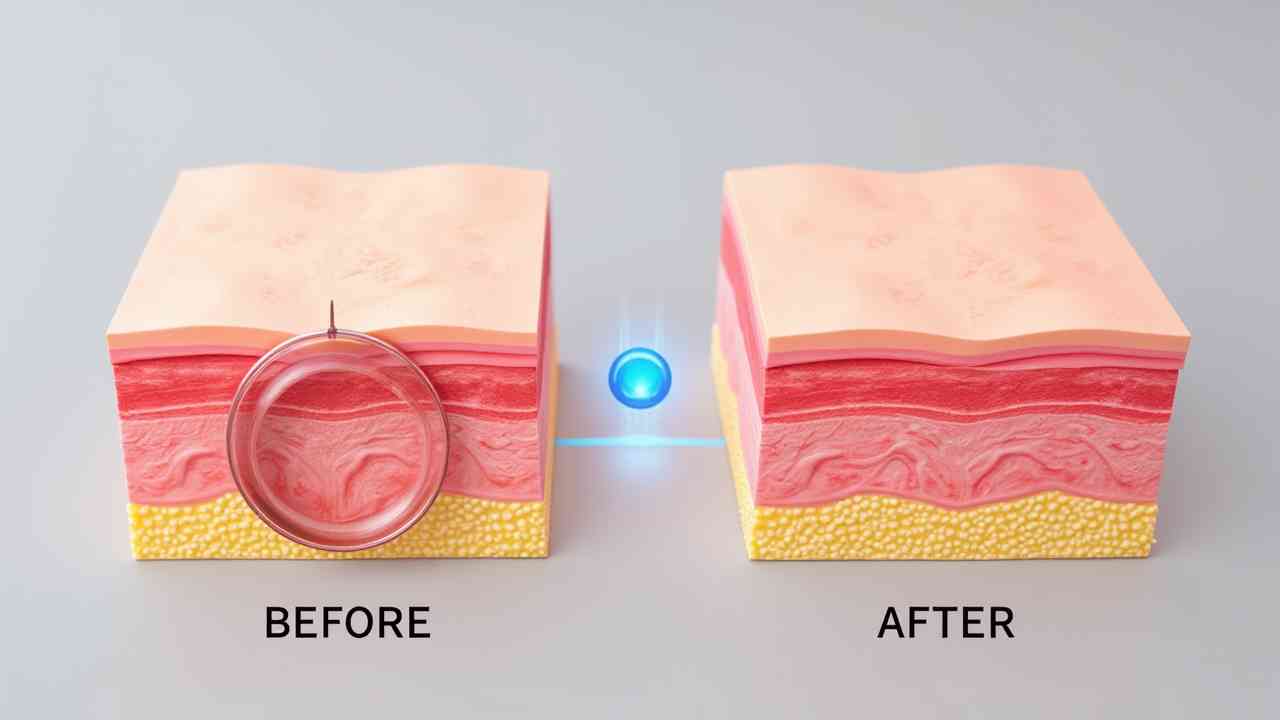
✨ Acne Scar Laser Treatment: Before and After (A Dermatologist's Guide)
✨ A Dermatologist's Guide to Acne Scar Laser Treatment (Before & After) ✨
❗ CRITICAL MEDICAL INFORMATION: Laser resurfacing is a serious medical procedure. It must be performed by a board-certified dermatologist or plastic surgeon. It carries risks, including burns, scarring, and hyperpigmentation. This guide is for informational purposes only and is not a substitute for a professional consultation.
Acne scars, the indented (atrophic) marks left behind by severe acne, can be a major source of frustration. They often don't respond to creams or serums. For those seeking a significant improvement, acne scar laser treatment is one of the most effective, gold-standard options available. The 'before and after' transformations can be life-changing, but it's crucial to understand the process, the downtime, and the realistic timeline.
This guide will explain how this technology works and what you can really expect from your 'before and after' journey. ✅
🤔 First, How Does Laser Treatment Work on Scars?
The core concept behind laser treatment is 'controlled injury.' The laser is a highly concentrated beam of light. It works in two main ways to fix acne scars:
- It sends heat deep into the dermis of the skin. This heat stimulates your body's natural healing response, telling it to create a large amount of new, healthy collagen. This new collagen helps to 'fill in' the indented scars from the bottom up.
- Some lasers (ablative) also vaporize the top, damaged layer of the skin. This removes the old scar tissue and allows fresh, smooth skin to regenerate in its place.
- What Kind of Scars Does It Treat?
Laser treatments are most effective for atrophic or indented scars. This includes:
- Rolling Scars: Shallow, wide scars with a 'wave-like' appearance.
- Boxcar Scars: Wider, box-like scars with sharp, defined edges.
- Ice Pick Scars: Deep, narrow scars. These are the most difficult to treat and often require a combination of treatments.
- The 'Before' vs. 'After' Photo: A Realistic Timeline
This is the most important part to understand. The stunning 'after' photo you see online does not happen a week after the procedure. The journey requires patience.
The 'Before' State:
This is your baseline. Your skin has uneven texture, visible indentations, and a rough surface.
The 'Immediate After' (The Downtime):
Immediately after the procedure, your skin will look worse, not better. This is the healing phase. You can expect:
- Redness: Your face will be very red, as if you have a severe sunburn.
- Swelling: This is a normal inflammatory response.
- Peeling & Crusting: As the old, damaged skin comes off, your face will peel and may form small scabs.
This downtime can last from 5 days (for a non-ablative laser) to 2-3 weeks (for a full ablative laser). Following your doctor's post-care instructions during this time is critical.
The 'Real After' (3-6 Months Later):
The true, final results are not visible for 3 to 6 months after your procedure. It takes that long for your body to build all the new collagen to plump up the scars and remodel the skin. The results are permanent and gradual, improving month after month.
⭐ How Many Treatments Are Needed?
A single treatment will almost never be enough for significant acne scarring. To achieve the dramatic acne scar laser treatment before and after results you see online, most patients require a series of 3 to 5 treatments, spaced several weeks apart.
The cool, less sunny autumn and winter months are the best time to get laser treatments, as you must strictly avoid the sun during the healing process. Talk to a board-certified dermatologist to see if this procedure is right for you. 🩺